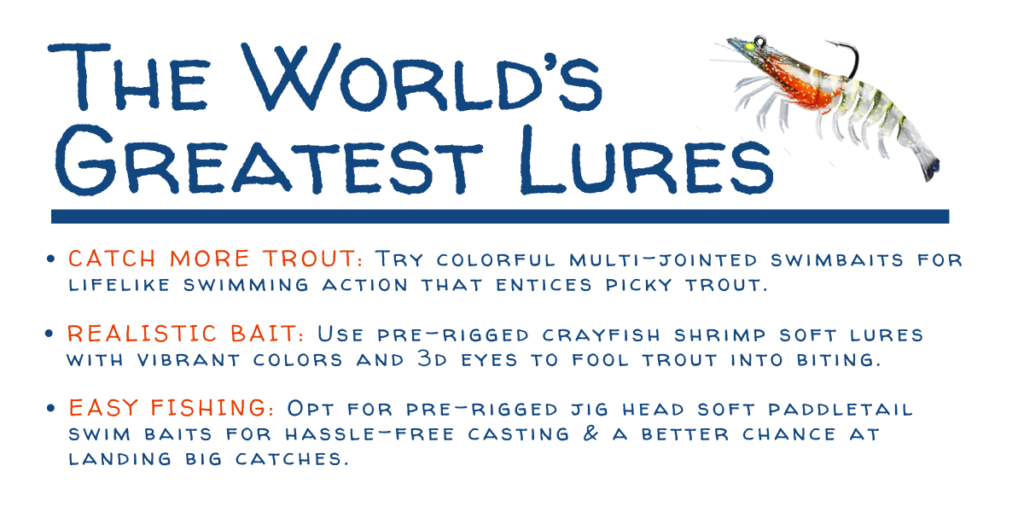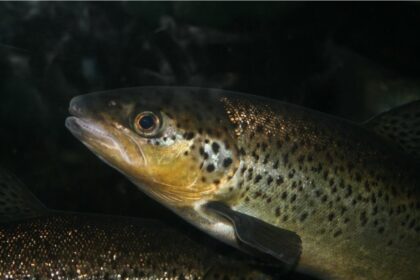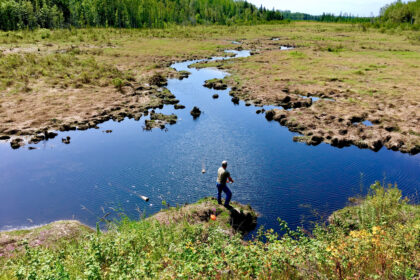Can you ice fish for rainbow trout? Yes! It is an increasingly popular activity among anglers during the winter months. Not all states will have a dedicated ice fishing season, due to having milder winter climates. But those with trout-inhabited water sources at higher elevations, or trout-stocked ponds will still have opportunities for ice fishing.
Which States Have Dedicated Ice Fishing Season?
States that have dedicated ice fishing seasons include: Alaska, Wisconsin, Minnesota, Michigan, Colorado, and Maine. These states are known for their winter fishing opportunities and have specific regulations in place that include ice fishing for rainbow trout. Other states may not have a dedicated ice fishing season, but may have rainbow trout-bearing lakes and streams in higher elevations that will freeze over during the winter months in which ice fishing is allowed, like in the Sierra Nevada Mountains in Northern California.
The ice fishing season for most states typically begins between December and January. However, the specific dates may vary depending on the state and local regulations. Here are some general timelines for ice fishing seasons in the aforementioned states:
Alaska: Can start as early as November and last until April.
Wisconsin: Typically runs from early December through late February or early March.
Minnesota: Generally begins around mid-December and lasts through February or March.
Michigan: The season usually starts in December and extends into March.
Colorado: Typically lasts from early December through mid-April, depending on location and weather conditions.
Maine: The season officially begins on January 1st and runs until March 31st
Be sure to check with the local fish and game commission for exact dates and regulations for ice fishing, and whether or not rainbow trout is available in that area.

Where are the Best Spots to Ice Fish for Rainbow Trout?
Before heading out on the ice to catch these tasty bows, it’s best to check out the location where you plan to ice fish BEFORE the water freezes over and the world becomes a winter wonderland. Once snow is on the ground and ice covers the waters, the area will look completely different than it did in warmer seasons. If doing this is not an option, check with local bait shops, sporting goods stores, or with locals for recommendations as to good spots for snagging one of these beauties beneath the ice.
If it is possible to get the lay of the water before things turn into a frozen-solid tundra, here are some of the most desirable features to look for when searching for the best spot to trout fish:
- Shallow Flats and Shoals: Rainbow trout can often be found cruising just off the bottom in shallow areas such as weedy bays and shoals. These nutrient-rich ranges provide a good feeding ground for trout.
- Points and Drop-offs: Larger trout can be found near points and drop-offs where there are changes in the lake bottom. These areas attract trout looking for food and shelter.
- Soft Sandy Bottoms: Look for large shallow flats or shorelines with soft sandy bottoms, ideally in 4 to 8 feet of water. Rainbow trout tend to prefer these areas during the winter months.
- Weedy Bays and Inlets: Targeting weedy bays and inlets can be fruitful as these areas often host the rainbow trout’s favorite forages, such as aquatic insects.
How Thick Does the Ice Need to be for Ice Fishing?
For ice fishing for trout, it is generally recommended to have a minimum ice thickness of 4 inches. This guideline ensures that the ice is sturdy enough to support an average person’s weight. It is important to note that this recommendation is for clear, solid ice. Mottled or slushy ice may not be as strong and should be avoided.
Snow-covered ice is generally considered less safe for ice fishing compared to clear, solid ice. Snow acts as an insulating blanket, preventing the formation of strong ice and interfering with freezing processes. It can also hide cracks, weak spots, or open water underneath, making it difficult to determine the ice’s strength. Ice covered by snow should always be approached with caution. It is crucial to check ice thickness and conditions regularly, adhere to ice safety guidelines, and exercise caution when venturing out onto snow-covered ice.

How Do Trout Behave in Ice-Covered Waters?
Trout exhibit specific behaviors in frozen waters that are influenced by various factors such as water temperature, oxygen levels, and their feeding patterns. Here are some common behaviors of trout in ice-covered waters:
- Slower Metabolism: In colder temperatures, trout’s metabolism slows down, causing them to be less active. They conserve energy and move at a slower pace.
- Gather Near Oxygenated Areas: Trout seek out areas where there is sufficient dissolved oxygen. These areas can include spring-fed holes, inflows, or areas where the ice cover is thinner, allowing for gas exchange.
- Suspended in Water Column: Trout often suspend themselves in the water column rather than staying near the bottom. This allows them to access different depths and follow their prey.
- Less Aggressive Feeding: Trout may exhibit less aggressive feeding behavior in frozen waters. They may feed more selectively and focus on smaller prey items that require less energy to catch.
- Slow and Deliberate Movements: Trout move more slowly and cautiously in frozen waters. They take their time when approaching potential food sources and conserve energy with deliberate movements.
- Holding in Pools and Eddies: In rivers or streams with frozen sections, trout tend to gather in pools and eddies where the water flow is slower. These areas provide a refuge from the swift current and offer access to nearby food sources.
- Limited Movement: Trout may reduce their overall movement in frozen waters, using their energy conservatively. They may stay in one spot or patrol a smaller area compared to more active periods.
For More Information
To find information on ice fishing for rainbow trout in each state, you can visit the official websites of the respective state’s fish and wildlife departments or tourism boards. These sources typically provide detailed information on regulations, fishing seasons, licensing requirements, and specific lakes or bodies of water where ice fishing is allowed.





